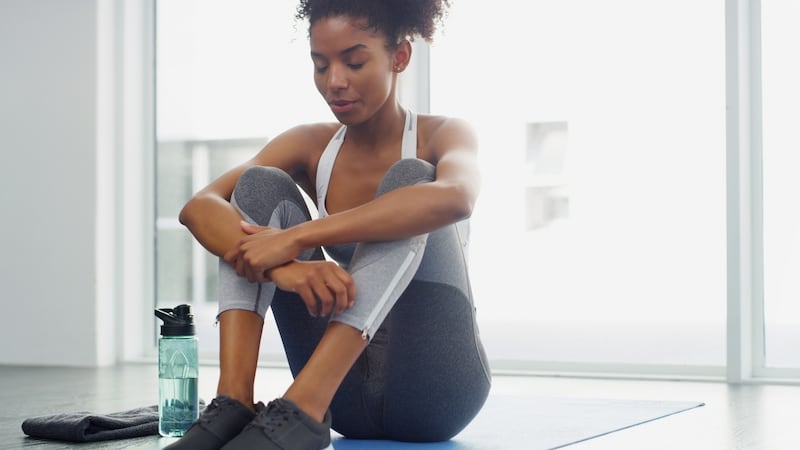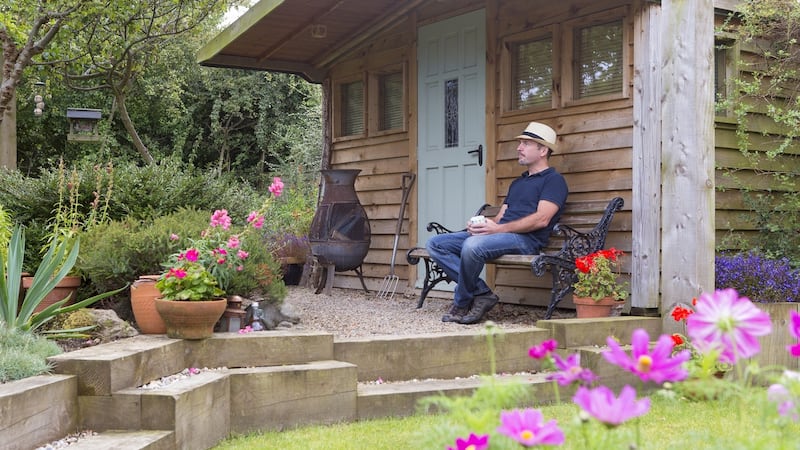We could all be forgiven for feeling a little worn out at the moment. Adjusting to a new way of life, remote working, keeping kids entertained and educated, as well as looking after older family members and loved ones, and with all the uncertainty about what’s coming next – it all takes its toll. More than ever, it is time to make space to unwind and relax. But how do we do that in a small space? Here are a few ways to carve out some space to relax and unwind, regardless of how little space you have to spare.
Five years ago, we created a showhouse for the Ideal Homes Show where we wanted to explore what at the time were forward-thinking ideas. We looked at trends in lifestyle and translated those into a series of living spaces to create what we called the home of the “near” future.
One of these living spaces was titled “the wellness room”. When we came up with the concept for this room, it was interesting that everyone in our office had a different idea of what the room should be like. For some it was a completely dark space where you could retreat and rest in isolation. For others it was a place to exercise, and for others, it was a quiet place to escape and read.

There is not a universal one-size-fits-all ideal environment to relax and unwind. Different personalities will need different things to help them relax. So you might find that what works best for your family is several different spaces throughout the home for each member of the family to retreat to.
Why do different people like to unwind in different ways? Neuroscientist Dr Michael Keane says, “It is useful to distinguish between passive relaxation and active relaxation. Active relaxation is the concept of ‘switching on to switch off’. This involves actively engaging in a pastime or hobby (or conversation with a friend, or interest like reading a book) rather than passive relaxation like TV watching or taking a bath.”
Depending on your personality, how you choose to relax in your home could differ from other family members. For those who prefer a passive form of relaxation, your bathroom could be the ideal place to escape to. Transform your evening routine into a spa-like experience, light some candles, pour yourself a bath and switch off. Another idea is to try to get to bed an hour earlier than you usually would and curl up with a good book.
The active type
For those who prefer a more active form of relaxation, why not make cooking your time to switch off? Put on your favourite music on and unwind while you prepare your favourite meal.
Another idea, suggests Dr Keane, is to make a ritual out of the ordinary. “This may be why vinyl [records] are becoming more popular. The act of having to browse an album collection, remove the record from the sleeve and play it means you are more likely to ‘actively’ listen rather than simply playing background music. This ultimately comes back to mindful use of time, and mindful engagement in what you are doing.”
Is there an unused or underused space in your home that you could transform into a restful retreat? This is the ideal time to clear out a box or junk room and turn it into somewhere you could work from, exercise in or simply escape to. In some homes, landing spaces are large enough to use as functional space. We’ve created window seats with bookshelves on landings in the past, transforming them from a transitional space to an inviting place to escape. Atmosphere is key when creating a space to unwind – minimise clutter, get the lighting right and introduce some plants.
A friend recently transformed his garden shed into a retreat for himself and his wife. They alternate when they use it, and it gives them time away from routine and the kids throughout the day.

Make a timetable
This idea of sharing a space throughout the day is a good one. When families are trying to carry out all of their daily functions under one roof, agreeing with your family when to use a particular space is essential, especially when you need time to focus on something such as work or to simply switch off and unwind.
“Having a physical space to yourself at a regular time (for example, ‘I have the kitchen to myself in the evenings”), it confers some sense of control over one’s environment. It also confers predictability and therefore a sense of safety,” says Dr Keane.
The area of the brain involved here is the amygdala or the gatekeeper of emotion. “This part of the brain is always on the alert for danger or threats,” says Dr Keane. “This might sound a bit dramatic. While you may not be afraid of your six-year-old son, your brain is aware of the possibility that he will burst in as you are relaxing, or reading, or working etc. This causes stress.”
It’s unpredictable, and therefore a part of your brain will not be able to switch off like it might have done when you were sure you had your own space or your time in a space. You lose that certainty and safety – psychological states that can foster creativity, flow state, focus, concentration, organisation and so on.
You might want to agree on a timetable for when certain rooms are to be used by certain members of the family. And the simple act of closing the door should be sufficient to remind others to respect your space.
There are currently many demands on our home, so it’s important to take the pressure off and focus less on creating physical space and help each other to find some headspace.
The future
We’ve been living with coronavirus restrictions for nearly two months now, and already many people are reassessing how they live and how they want to live in the future. Before the health crisis, having a home office was a nice thing to have. Now, however, being able to work comfortably from home will become much more of a priority for many.
The popular trend of open-plan living spaces may continue only in larger houses, where there is the option to have a series of additional discrete living spaces. Otherwise, we are likely to see a return to the more sectioned-off type of living arrangements of the past.
In new homes, coat cupboards and utility rooms are often sacrificed to create space for an open plan kitchen/living/dining space, which is usually seen as a selling point. Now, however, a dedicated coat store or boot room and good-sized utility space may well find more favour with purchasers.
Denise O’Connor is an architect and design consultant @optimisedesign













